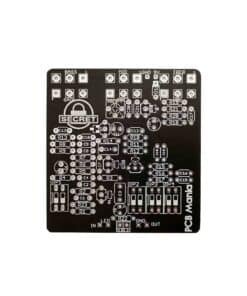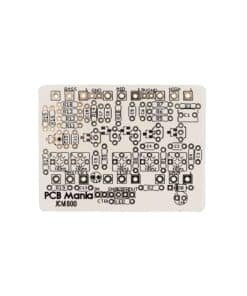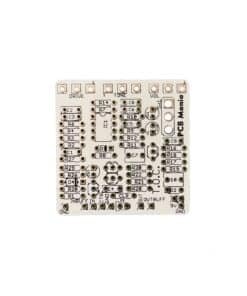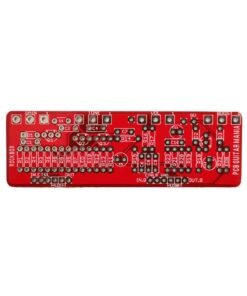Project overview
Looking for a classic Germanium Percolator with even more features? Check out our Deluxe version! This upgraded pedal comes with added Transistor and Output Cap switches, as well as Perc and Tweak controls for transistor biasing and Body potentiometer for input density control.
The Germanium Percolator is our take on one of the most famous and mysterious fuzzes, the InterFax HP-1 Harmonic Percolator. The Percolator does not have one “stock” design, an original version. There are reports of people tracing different units and finding slightly different values in between each other.
With this board you will be able to build two different versions of this project, “The Stock” version based on the analysis of many different schematics of the original Percolator, and the “Albini” version, popularized by the famous guitarist/producer, Steve Albini.
Introduction
The original Percolator was designed in Milwaukee, Wisconsin, in the 1970s as an original circuit not based on anything previously available in that era. With a silicon PNP transistor and a germanium PNP transistor, the circuit passes even order harmonics while suppressing odd-order harmonics. These even-order harmonics are more pleasing to the ear than odd-order harmonics.This board allows you to build two different versions of the same pedal:
- The Stock version is much more wild, raw, and hard to control. It delivers an over-compressed sound. Also is more prominent to be noisy than the Albini version.
- The Albini version is smoother and more controlled, which reminds of an aggressive Fuzz Face with unique characteristics. When the Harmonic know is all the way up, it can get really compressed as well.
The Deluxe version features not only an additional toggle switch to select between diodes but Transistor and Output Cap switches to select between those components. You can play around with some 3mm Red LEDs for a louder sound and less compressed drive or with some other germanium diodes for a compressed and creamy tone.
There’s no definitive ideal hFE for the Germanium 2N404 in the circuit, but based on our experience with the circuit, anything between 40-60 sounds great – nice and crunchy with plenty of focus. As the gain increases, it gets a little unruly and makes some noise; at this point, it also starts to get the microphonic behavior that can be a fascinating tool.
Controls
Potentiometers
- Balance
- Body
- Harmonic
- Perc
- Tweak
Switches
- Output_cap
- Transistors
- Diodes
For any technical questions regarding this build don’t forget to check out our Facebook Group and our forum at Free Stomp Boxes.












Reviews
There are no reviews yet.